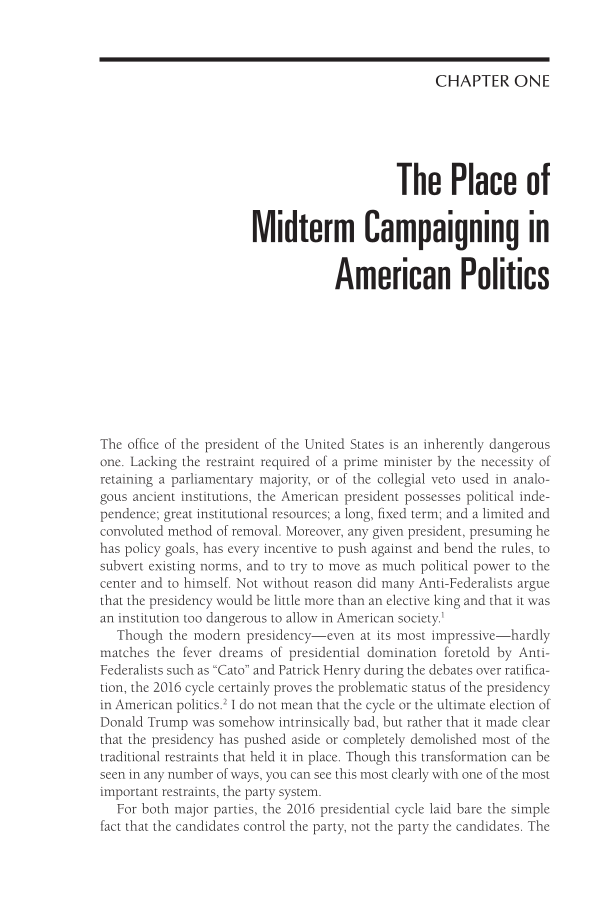CHAPTER ONE The Place of Midterm Campaigning in American Politics The office of the president of the United States is an inherently dangerous one. Lacking the restraint required of a prime minister by the necessity of retaining a parliamentary majority, or of the collegial veto used in analo- gous ancient institutions, the American president possesses political inde pendence great institutional resources a long, fixed term and a limited and convoluted method of removal. Moreover, any given president, presuming he has policy goals, has every incentive to push against and bend the rules, to subvert existing norms, and to try to move as much political power to the center and to himself. Not without reason did many Anti-Federalists argue that the presidency would be little more than an elective king and that it was an institution too dangerous to allow in American society.1 Though the modern presidency—even at its most impressive—hardly matches the fever dreams of presidential domination foretold by Anti- Federalists such as “Cato” and Patrick Henry during the debates over ratifica- tion, the 2016 cycle certainly proves the problematic status of the presidency in American politics.2 I do not mean that the cycle or the ultimate election of Donald Trump was somehow intrinsically bad, but rather that it made clear that the presidency has pushed aside or completely demolished most of the traditional restraints that held it in place. Though this transformation can be seen in any number of ways, you can see this most clearly with one of the most important restraints, the party system. For both major parties, the 2016 presidential cycle laid bare the simple fact that the candidates control the party, not the party the candidates. The
Document Details My Account Print multiple pages
Print
You have printed 0 times in the last 24 hours.
Your print count will reset on at .
You may print 0 more time(s) before then.
You may print a maximum of 0 pages at a time.

















































































































































































